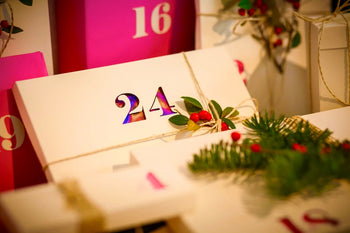If someone said the phrase “Christmas candy” to you, what would pop into your head?
There’s a good chance that many people would say “candy canes,” one of the most ubiquitous holiday symbols around. The red-and-white-striped candy peppermint sticks are such a vital part of the Christmas season that many people have an almost Pavlovian response to them, purchasing them the minute they appear in the stores, as if to signal that the holiday season can finally begin. It’s no surprise that candy canes are generally the top selling, non-chocolate candy in December.
Fun Fact: More than a billion candy canes are produced in the United States every year and 90% are sold between Thanksgiving and Christmas.
But…where do candy canes come from?

Candid Origins of Candy Canes
One theory suggests that sugar sticks were given to misbehaving choir boys in Cologne, Germany in 1670 during the Living Creche ceremony. Why were naughty boys given a treat instead of a lump of coal? The candy was to actually keep the boys quiet and was certainly a more favorable “punishment” than being hit with a switch. Some say the choirmaster bent the sticks into the shape of shepherds’ crooks in honor of the occasion, while others claim the bend came later to hang candy canes as a holiday decoration. Regardless, this practice of passing out candy sticks was so successful that it turned into a popular tradition and spread to other churches in Europe.
So if this is just a treat for misbehaving kids, why are there red and white stripes on candy canes?
Legend has it that In Wooster, Ohio, a German Swedish immigrant named August Imgard decorated a blue spruce with paper ornaments---and white candy canes--in 1847. Yes, candy canes were pure white and tasted only of sugar for a long time. The red and white stripes became popular at the beginning of the 20th century after multiple colors and flavors were added. The combination of red and white, with the taste of peppermint, emerged as the clear favorite.
Numerous stories have developed as to the reasoning behind the color scheme and the shape of the candy. Some theories have speculated that the red represented the blood of Christ, while the white stood for purity, and that the J stood for Jesus. Other people say that’s all simply a myth.

Mass-Produced Candy Canes
In the 1920s, a gentleman named Bob McCormack began producing candy canes by hand (a seriously labor-intensive undertaking) to hand out to friends and family during the holiday season. In the 1950s, Gregory Keller, his brother-in-law, invented a machine that could mass produce candy canes, and they were distributed around the world. His company, Bob’s Candies, is still in business today!
Today, candy canes come in all sizes, from teeny ones that can hang on a tree branch to enormous ones that weight close to a pound. And consumers no longer just have to settle for peppermint flavor (although many people would agree that classic is best, especially when using it as a stirrer for hot chocolate). If you’re looking for new taste sensations, candy canes now come in flavors including apple pie, pumpkin pie, birthday cake, cherry, chocolate mint, and even novelty flavors like pickle, wasabi, sriracha, bacon, and macaroni & cheese.

How To Eat A Candy Cane
Up there with the great holiday debates such as “is Die Hard a Christmas movie?” and “who gets the last piece of pie?”, is what is the “correct” way to eat a candy cane?
Believe it or not, a study was actually done to solve this issue. According to the National Confectioners Association (yes, that’s a thing) 72% of people say the “right” way to eat a candy cane is to start from the straight end. The other 28% prefer to start at the hook. Strangely, no one said breaking it into bite-sized pieces or turning it into candy cane ice cream… although those are totally valid consumption methods as well.
Really, there’s no wrong way to eat… or display a candy cane—just enjoy them as you like throughout the holiday season!
For a fun candy-cane activity, learn How To Make Your Own Candy Cane Goodie Bags this holiday season!






